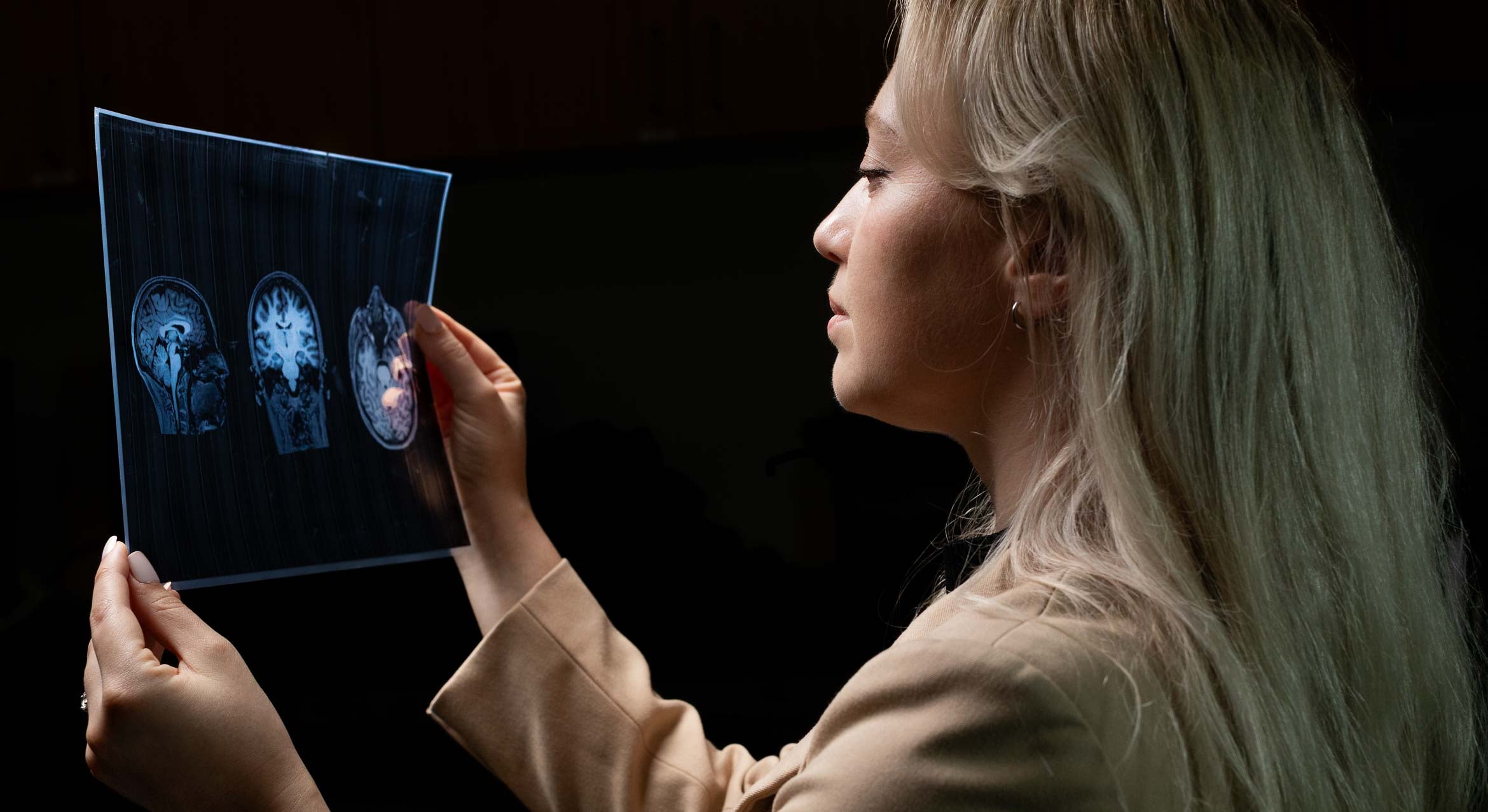Computers might one day recycle part of their own waste heat, using a material being studied by researchers at UC Santa Barbara and Ohio State University.
The material is a semiconductor called gallium manganese arsenide. In the online edition of Nature Materials, researchers describe the detection of an effect that converts heat into a quantum mechanical phenomenon –– known as "spin" –– in a semiconductor.
David Awschalom, professor of physics and director of UCSB's Center for Spintronics, and graduate student Shawn Mack prepared the semi-conductor material into thin single-crystal films, and assisted with interpretation of the results of the experiments performed at Ohio State.
Once developed, the spin effect may enable integrated circuits that run on heat, rather than electricity. This research merges two cutting-edge technologies: thermo-electricity and spintronics, explained team leaders Joseph Heremans, Ohio Eminent Scholar in Nanotechnology, and Roberto Myers, assistant professor of materials science and electrical engineering at Ohio State University.
"These surprising results represent an exciting development in the field of semiconductor spintronics, and have emerged from a strong scientific collaboration between physicists, materials scientists, and electrical engineers across both universities," said Awschalom. "Our combined abilities to fabricate magnetic semiconductors at the atomic level with high-precision electrical measurements led to findings which may have substantial impact in future spin-based electronic devices."
Researchers around the world are working to develop electronics that utilize the spin of electrons to read and write data. Spintronics are desirable because, in principle, they could store more data in less space, process data faster, and consume less power. Myers and Heremans are trying to combine spintronics with thermo-electronics ––
devices that convert heat to electricity.
The hybrid technology, "thermo-spintronics," would convert heat to electron spin. In so doing, thermo-spintronics could solve two problems for the computing industry: how to remove waste heat, and how to boost computing power without creating more heat.
"Spintronics is considered as a possible basis for new computers in part because the technology is claimed to produce no heat," Heremans said. "Our measurements shed light on the thermodynamics of spintronics, and may help address the validity of this claim."
In fact, as the electronics industry tries to build smaller, denser computer circuits, a main limiting factor is the heat those circuits produce, said Myers.
"All of the computers we have now could actually run much faster than they do, but they're not allowed to –– because if they did, they would fail after a short time," Myers said. "So a huge amount of money in the semiconductor industry is put toward thermal management."
In one possible use of thermo-spintronics, a device could sit atop a traditional microprocessor and siphon waste heat away to run additional memory or computation. Myers noted that such applications are still a long way off.
The researchers studied how heat can be converted to spin polarization –– an effect called the spin-Seebeck effect. It was first identified by researchers at Tohoku University, and reported in a 2008 paper in the journal Nature. Those researchers detected the effect in a piece of metal, rather than a semiconductor.
The new measurements, carried out by team member Christopher Jaworski, doctoral student of mechanical engineering at Ohio State, provide the first independent verification of the effect in a semiconductor material called gallium manganese arsenide.
While gallium arsenide is a semiconductor used in cell phones today, the addition of the element manganese endows the material with magnetic properties. Jing Yang, doctoral student of materials science and engineering at Ohio State, processed samples provided by UCSB for the experiment.
In this type of material, the spins of the charges line up parallel with the orientation of the sample's overall magnetic field. So when the Ohio State researchers were trying to detect the spins of the electrons, they were really measuring whether the electrons in any particular area of the material were oriented as "spin-up" or "spin-down."
In the experiment, they heated one side of the sample, and then measured the orientations of spins on the hot side and the cool side. On the hot side, the electrons were oriented in the spin-up direction; on the cool side, they were spin-down.
The researchers also discovered, to their own surprise, that two pieces of the material do not need to be physically connected for the effect to propagate from one to the other.They scraped away a portion of the sample to create two pieces of material separated by a tiny gap. If the spin effect were caused by electrical conduction –– electrons flowing from one part of the material to the other –– then the gap would block the effect from spreading. Again, they applied heat to one side and the effect persisted.
"We figured that each piece would have its own distribution of spin-up and spin-down electrons," said Myers. "Instead, one side of the first piece was spin up, and the far side of the second piece was spin down. The effect somehow crossed the gap."
"The original spin-Seebeck detection by the Tohoku group baffled all theoreticians," Heremans added. "In this study, we've independently confirmed those measurements on a completely different material. We've proven we can get the same results as the Tohoku group, even when we take the measurements on a sample that's been separated into two pieces, so that electrons couldn't possibly pass between them."
Despite these new experiments, the origin of the spin-Seebeck effect remains a mystery.
This work was supported by the National Science Foundation, the Office of Naval Research, and the Ohio Eminent Scholar Discretionary Fund. Partial support was provided by The Ohio State University Institute for Materials Research.
Related Links



